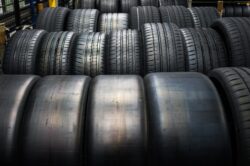The modern car is a marvel of engineering, and tires are an integral part of its safe operation. But just how are car tires tested and produced? In this article, we will explore the scientific processes behind testing and producing car tires in detail to understand their importance in our everyday lives.
From examining materials used in production to understanding the various tests applied during quality control, learn about the science that goes into keeping us safe on the roads.
The Science of Tire Design
The Science of Tire Design is a highly technical and precise area. It requires an understanding of materials, tread design, construction techniques, rolling resistance, and more. Car tire testing and production look at the performance characteristics of tires to ensure they meet safety standards for handling and braking in various driving conditions.
Every aspect is considered when designing a tire – from the type of rubber used to the size and pattern on the treads. The combination of these elements creates a product that can provide reliable road grip while also minimizing wear on both vehicle components and tire surfaces.
Manufacturing Processes for Tires
Source: youtube.com
When it comes to producing tires, the manufacturing process is a complex one. From the initial design and testing phases to final quality assurance inspections, tire manufacturers employ a range of techniques and procedures to ensure that their products meet industry standards. During production, raw materials such as rubber compounds are mixed with other ingredients like carbon black or silica in large mixing machines.
The resulting compound is then molded into semi-finished green tires which are placed on molds for curing at high temperatures before being trimmed and subjected to inspection processes such as dynamic balancing tests. Once these tests have been passed successfully, the finished product can be shipped out for sale worldwide. With advances in both technology and safety regulations over recent decades, tire manufacturers must now use sophisticated methods during each step of the process to guarantee that their products offer optimal performance when used on roads around the world.
Analyzing the Performance of Different Tires
To ensure car tires are safe and perform well, tire manufacturers must routinely test their products. By analyzing the performance of different tires in various conditions, companies can determine which models meet specific safety standards and provide the best driving experience for consumers.
This article examines the science behind tire testing and production to understand how these tests result in high-quality car tires that last longer and offer superior traction on wet or dry roads. Through a combination of computer simulations, lab experiments, road tests, and customer feedback surveys, researchers can accurately measure factors such as wear rate, fuel economy, braking distance, aquaplaning resistance capacity (ARC), road noise levels, and grip coefficient.
These metrics form an essential basis upon which companies can compare the performance of different models with one another to create cost-effective solutions that offer enhanced safety features without sacrificing comfort or handling capabilities.
Advances in Technology and Automation in Car Tire Testing and Production
Source: s19532.pcdn.co
As car tire testing and production become increasingly automated, advances in technology are making it easier than ever to ensure the quality of the finished product. Automated systems can now detect tiny imperfections that would otherwise be overlooked by humans, increasing safety and reliability while reducing costs.
Computers can also take over tedious tasks such as inspecting each tire for wear, tear, or damage before they leave the factory floor. This has improved efficiency significantly and allowed manufacturers to monitor their progress every step of the way.
Additionally, modern technologies allow for data to be collected quickly and accurately during all stages of production – from raw materials sourcing right through to shipping – so that any anomalies can be spotted immediately and rectified quickly if necessary. All this means that cars on our roads today are safer than ever thanks to technological advances in car tire testing and production.




